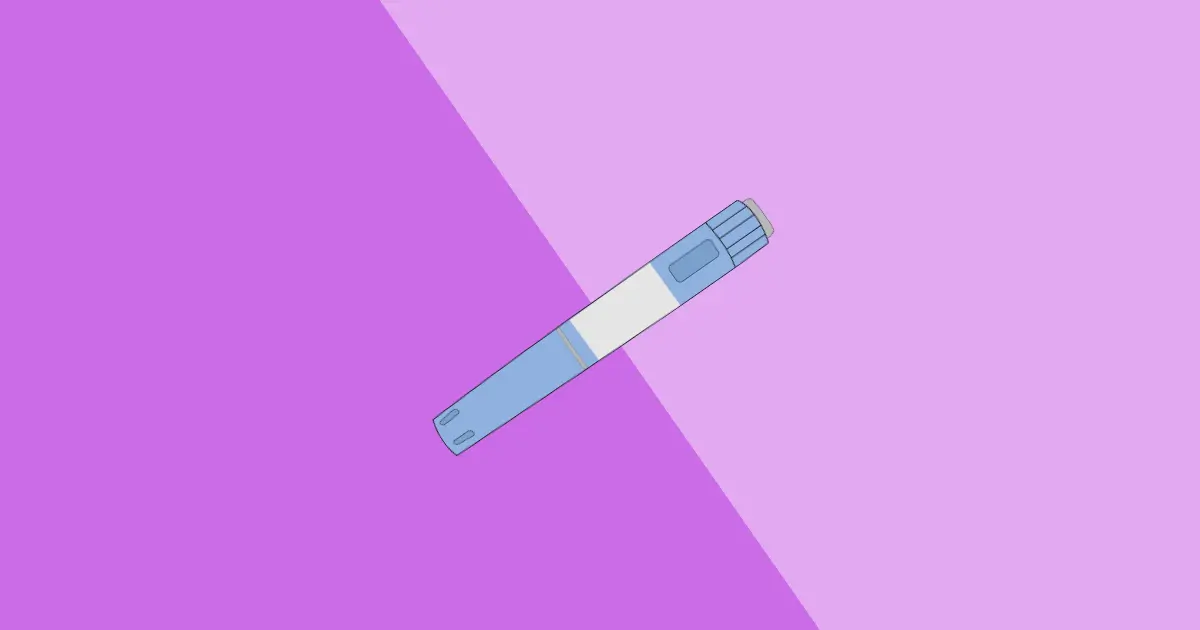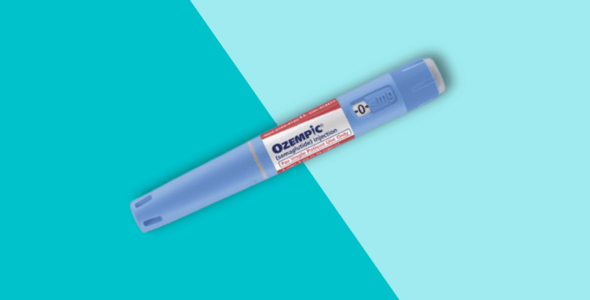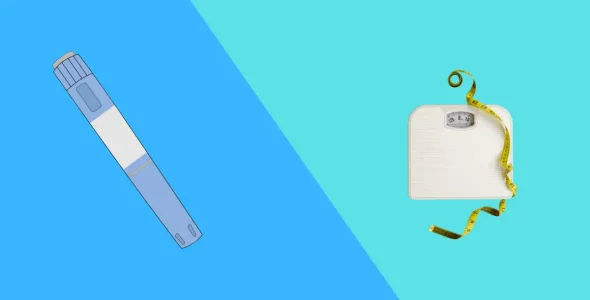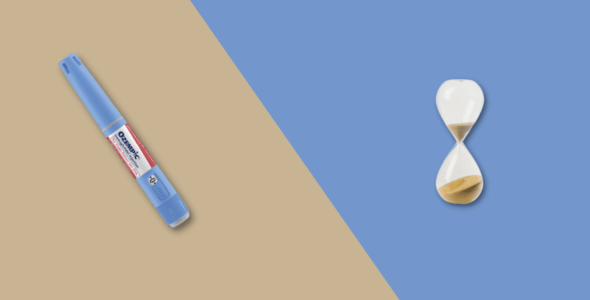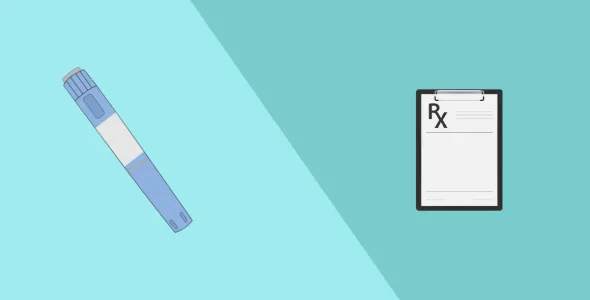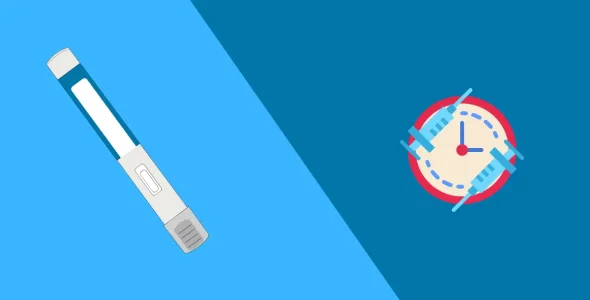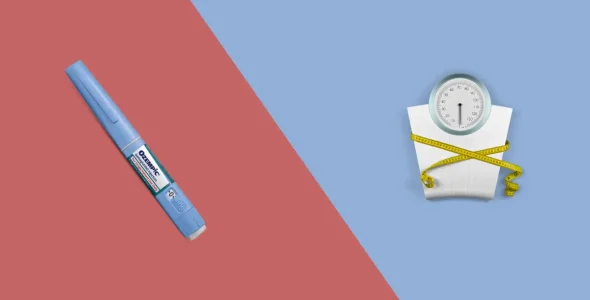Can I take a half dose of Ozempic?
If you've found yourself searching for this question, you're not alone. Many people on Ozempic consider adjusting their dose due to cost, side effects, or shortages.
Key highlights
- The Ozempic dose is gradually increased every 4 weeks to help minimize side effects and enhance the medicine's effectiveness. You should always follow the dosing schedule prescribed by your doctor.
- Taking a half dose without your doctor’s guidance is not safe. It could lead to poor blood sugar control, less weight loss, or fewer heart health benefits.
- In some rare cases, like managing side effects, restarting treatment, or adjusting for health conditions, a lower dose may be needed. This should only be done with your doctor’s guidance.
- Ozempic pens are not meant to be split manually. Using them this way may cause dosing errors and make the treatment less effective.
- The best way to take Ozempic is once a week at the same time each week. This helps keep the medicine working steadily in your body and makes it easier to use.
- Always talk openly with your doctor and never change your Ozempic dose on your own.
Ozempic (active ingredient: semaglutide) is an FDA-approved glucagon-like peptide-1 (GLP-1) receptor agonist made by Novo Nordisk. It is used to lower blood sugar in people with type 2 diabetes and is also used off-label for weight loss in people with obesity and overweight.
Ozempic is also FDA-approved for reducing the risk of major cardiovascular events (heart attack, stroke) in adults with type 2 diabetes and known heart disease. The U.S. Food and Drug Administration (FDA) has also approved its use for reducing the risk of worsening kidney disease and cardiovascular death in adults with chronic kidney disease and type 2 diabetes.
Ozempic is intended for once-weekly use, starting at 0.25 mg and increasing to 0.5 mg, 1 mg, or 2 mg as prescribed. The pens aren’t made to be split, and any other dosing should only be done under a doctor’s supervision.
Some doctors or patients have tried splitting Ozempic doses (like taking half doses twice a week) to reduce stomach side effects, but this is based on limited evidence. Since Ozempic is long-acting and meant to last a full week, changing the schedule can affect how the medicine works.
People often face challenges with Ozempic due to its high cost, bothersome side effects, and occasional shortages at pharmacies. These issues are common reasons for changing the dose or stopping treatment.
Can I take a half dose of Ozempic? This article explains everything you need to know about splitting doses, microdosing, risks involved, and the safe, effective alternatives you can discuss with your doctor.
The short answer: Why doctors warn against splitting Ozempic doses
Ozempic is started at a low dose and gradually increased every 4 weeks so your body can adjust, and side effects like nausea are reduced. Cutting your dose in half on your own (for example, going from 1 mg back to 0.5 mg) can slow your progress. It may make blood sugar harder to control, reduce weight loss, and cause unwanted side effects.
The FDA-approved dosing schedule is:
- Start with 0.25 mg once a week for the first 4 weeks (this dose mainly helps your body get used to the medicine).
- Increase to 0.5 mg weekly for 4 weeks.
- If more blood sugar control is needed, the dose can be gradually increased to 1 mg or 2 mg per week.
Do not attempt to split or take a half dose of Ozempic without explicit instruction and guidance from your healthcare provider. The main reasons are:
Ozempic pens are manufactured to deliver specific pre-set doses. They aren’t designed to be split or adjusted at home. Trying to take “half a dose” by guessing or using clicks can easily lead to underdosing or overdosing, which makes your treatment less reliable and could waste medication.
When a pen is used in ways it wasn’t designed for, such as forcing smaller doses or trying to transfer the medication, it can break the sterile seal. This raises the risk of contamination and infection, and it also makes the pen less dependable. In short, tampering with the device puts both your safety and results at risk.
How to use Ozempic pens?
Ozempic is available in four different pre-filled, multi-dose syringe pen doses. Ozempic dosages are 0.25 mg, 0.5 mg, 1.0 mg, and 2 mg.
Ozempic comes as a prefilled pen with multiple doses, so you can reuse the pen for a month but use a new needle each time. Your pharmacy will give you one pen and the needles.
Each pen has four different doses, which is a 1-month supply. The number of pens you get depends on your dose. The maximum dose is 2 mg once a week.
Like other GLP-1 drugs, Ozempic is a weekly injection used for reducing blood sugar levels and also used off-label to reduce body weight. If you’re using your Ozempic prefilled pen for the first time, you can ask your doctor or pharmacist for advice or check the instructions from the manufacturer.
Here’s how to inject the Ozempic pen correctly:
- Wash your hands with soap and water, and remove the cap from the Ozempic pen.
- Put a new needle on the pen (always use a new needle and don’t share needles).
- Clean the skin where you’ll inject with an alcohol swab and let it dry completely.
- If it’s your first time using the pen, check the flow by turning the dose dial until you see the flow-check symbol. Then, press the dose button until a drop appears at the needle tip. (You only need to do this the first time.)
- Turn the dose dial to select your prescribed dose.
- Insert the needle under your skin at the injection site (abdomen, thigh, or upper arm).
- Press the dose button and keep it pressed until the dose counter shows 0.
- Hold the button down and leave the needle in your skin for 6 seconds to make sure you get the full dose.
- While still pressing the button, carefully pull the needle out of your skin.
- Remove the needle and throw it away safely in a sharps container.
- Put the pen cap back on and store the pen in the fridge or at room temperature.
You can take Ozempic with or without food. Make sure to change the injection site each week. If you have any questions, ask your pharmacist or healthcare professional.
The role of the Ozempic pen: Why it can’t be split
Understanding how the Ozempic pen works helps explain why half doses are risky:
- Precision device: Each Ozempic pen is calibrated to deliver specific doses, 0.25 mg, 0.5 mg, 1 mg, or 2 mg. The internal mechanism is designed for these exact amounts.
- Click mechanism: Every “click” delivers a pre-measured dose. Trying to count clicks or partially depressing the plunger can result in inaccurate dosing.
- Single-patient use: The pen is meant for one person and one injection schedule. Attempting to split doses or share pens can increase contamination risk.
- Dose-dependent effectiveness: The benefits of Ozempic on blood sugar, weight loss, and cardiovascular protection rely on receiving the correct, full therapeutic dose. Inconsistent dosing can reduce these benefits.
Ozempic pen is a precision device, and tampering with it can compromise both the safety and effectiveness of your treatment plan. Any dose adjustment should be done strictly under medical guidance.
Understanding how the Ozempic pen is designed to work
The Ozempic pen is a multi-dose injector meant for use by one person only. Each time you press the pen, it makes a “click” and delivers a precise, pre-measured dose of medicine, ensuring accurate dosing every time.
While taking half doses on your own is not recommended, there are some situations where a lower dose may be helpful, but only under a doctor’s guidance.
- Patients with ongoing side effects may temporarily reduce the dose to help their body adjust, then gradually return to the full dose once symptoms improve.
- If treatment is paused for several weeks, restarting at a full dose could increase side effects, so doctors often recommend starting lower and gradually increasing.
- Some people who have reached their weight loss goals might use a smaller dose to maintain results while reducing medication exposure.
- People with certain health conditions, like kidney problems or digestive issues, or those taking other medications, may also need dose adjustments for safety.
It’s important to never self-administer half doses, as this can lead to incorrect dosing, misuse of the pen, and weaker results. Only a healthcare professional can decide if a lower dose is safe and appropriate for you.
The FDA-approved titration schedule
The FDA-approved Ozempic titration schedule is:
- 0.25 mg once weekly for 4 weeks – This is a non-therapeutic starter dose meant to help your body adjust and reduce the risk of severe side effects like nausea.
- 0.5 mg once weekly for 4 weeks – The first therapeutic dose to start improving blood sugar and weight management.
- 1 mg or 2 mg once weekly – Maintenance doses if further blood sugar control or weight loss is needed.
Gradually increasing the dose allows your body to get used to the medication, which helps minimize gastrointestinal side effects and makes treatment more tolerable.
The meanings of “half dose”
Patients sometimes refer to a “half dose” in two main ways, each with different effects and risks:
Lowering the weekly dose
Sometimes patients consider lowering their weekly Ozempic dose when side effects like severe nausea, vomiting, diarrhea, or extreme fatigue become difficult to manage. In some cases, this approach can temporarily make the medication more tolerable, giving the body time to adjust.
However, lowering the dose comes with trade-offs. A smaller dose may not control blood sugar as effectively, which can increase the risk of high glucose levels and related complications. Weight loss may also slow down or stall, and other therapeutic benefits, such as cardiovascular protection, may be diminished.
That’s why it’s never safe to reduce your dose on your own. Any dose change should be carefully managed by your doctor, who can create a personalized treatment plan. This might mean staying at a lower dose for a longer period, restarting titration, or using supportive treatments to help you tolerate the medication until you’re ready to move back to the full therapeutic level.
Splitting a weekly dose (microdosing)
Some patients wonder if they can split their weekly Ozempic dose into two smaller injections, for example, taking 0.5 mg twice a week instead of 1 mg once weekly. The thinking is that since semaglutide is a long-acting medication, spreading the dose out could maintain drug levels in the body more stably, potentially easing side effects like nausea and providing more consistent energy throughout the week.
While this idea may sound appealing, it’s important to know that Ozempic was only studied and approved for once-weekly dosing. The pens are calibrated and labeled for that schedule, and there’s no clinical trial evidence confirming that Ozempic microdosing is equally safe or effective.
This kind of dose-splitting is considered off-label use and should only be done under explicit instructions from your healthcare provider. It should never be attempted without direct guidance from your healthcare provider. If a doctor determines it may be appropriate for you, they can give you clear instructions on exactly how much to inject and how often, while monitoring your progress closely.
The risks of trying to take a half-dose
Ozempic works best when taken at the prescribed dose. Cutting the dose in half might lower side effects, but it can also make the medicine less effective.
Dosage inaccuracy and underdosing
Ozempic pens (red, blue, and yellow labels) are precisely calibrated to deliver set doses: 0.25 mg, 0.5 mg, 1 mg, or 2 mg.
They are not designed for manual dose splitting. Trying to partially press the plunger or estimate a half dose can lead to incorrect dosing and wasted medication.
Some discussions suggest using “clicks” to measure half doses (72 clicks = 1 mg, so 36 clicks = 0.5 mg), but this is not manufacturer-approved and can easily cause errors. Getting a precise half dose is nearly impossible. You may get too little or too much medication.
Evidence shows that higher Ozempic doses work better for controlling appetite and reducing body weight. Taking a half dose can still help with weight loss, but it will usually be slower and less noticeable than the full dose. Ineffective blood sugar control or weight management leads to frustration and wasted medication.
Because Ozempic’s effects on blood sugar (HbA1c), weight loss, and heart protection are dose-dependent, taking a half dose may reduce all these benefits, especially cardiovascular protection in patients with heart disease.
Increased risk of contamination and infection
Ozempic pens are designed to keep the medication sterile until it is properly injected. Attempting to pierce the cartridge, split the dose, or transfer the medication can break this sterile barrier, allowing bacteria or other contaminants to enter.
This can lead to local infections at the injection site, such as redness, swelling, or painful bumps, and in severe cases, it may cause systemic infections that affect the whole body. Contaminated medication can also reduce the effectiveness of the treatment and may require medical attention, making improper handling a serious health risk.
Wasted medication and higher long-term costs
Ozempic pens are expensive, often costing up to $1,000 per month without insurance. Mishandling the pen, such as trying to split doses, transfer medication, or tamper with the cartridge, can ruin the entire pen and make it unusable.
Not only do you lose the remaining medication, but you also face higher long-term costs because you’ll need to replace the pen sooner than planned. Repeated errors like this can add up, making treatment much more expensive and frustrating over time.
Unpredictable side effects
Taking inconsistent or incorrect doses of Ozempic can upset your body’s balance and lead to unexpected reactions. Even if you were previously tolerating the medication without problems, altering the dose, such as taking a half dose or splitting it, can trigger severe nausea, vomiting, or diarrhea.
These sudden side effects occur because your body is adjusting to the changing levels of the drug, which can also cause fatigue, dizziness, or loss of appetite. Over time, inconsistent dosing can make it harder for your body to adapt, reducing the overall effectiveness of the treatment and potentially making side effects more intense when you return to the correct dose.
Reasons for considering a half-dose and alternative options
Some of the reasons when a half-dose or any alternative options are considered may include:
Side effects
It’s common to experience nausea, vomiting, diarrhea, or stomach discomfort when starting Ozempic or increasing your dose.
These side effects usually improve over time as your body adjusts, but they can be uncomfortable enough to make patients consider reducing their dose.
Safe alternatives may include:
- Stay on your current dose longer: Giving your body more time at the current dose before increasing can help minimize side effects.
- Restart the titration schedule at a lower dose: If side effects are severe, your doctor may recommend going back to a lower dose and gradually increasing again to allow gentler adaptation.
- Dietary adjustments: Eating smaller meals, avoiding high-fat or greasy foods, and spacing meals evenly can reduce nausea and stomach upset.
- Anti-nausea medications: Your doctor may prescribe or recommend anti-nausea medications such as Zofran (ondansetron) to help manage symptoms while your body adjusts.
These strategies aim to manage side effects safely without compromising the effectiveness of your treatment.
Cost
One of the biggest challenges with Ozempic is its high cost, which can make it difficult for many patients to stay consistent with treatment. Missing doses or trying to stretch medication by self-adjusting (such as taking half doses) often feels like the only option, but it can reduce effectiveness and compromise your health goals.
Safe alternatives include:
- Ozempic savings card: Many pharmaceutical companies offer discount programs that can significantly reduce out-of-pocket costs if you qualify. Commercially insured patients with insurance coverage for Ozempic could pay as little as $25 per month, or $499 per month without insurance coverage.
- Novo Nordisk Patient Assistance Program (PAP): Nonprofit organizations, insurance-based programs, and foundations may provide free or reduced-cost medication for those who meet income or insurance requirements. Eligible patients could receive free Ozempic through the Novo Nordisk Patient Assistance Program, which is intended for low-income individuals who meet income and insurance criteria.
- Alternative GLP-1 medications: Other drugs in the same class, such as Trulicity or Victoza, may be more affordable depending on your insurance plan. Your doctor can help decide if switching is appropriate.
Avoid buying Ozempic from unregulated online sellers or compounding pharmacies that aren’t licensed. These sources may provide unsafe or counterfeit medication, putting your health at serious risk.
By discussing these options with your doctor, you may find safer, cost-effective ways to continue treatment without sacrificing results.
Shortages
Medication shortages can be stressful, especially when you’ve been doing well on Ozempic and suddenly can’t find your prescribed dose at the pharmacy. These disruptions may tempt patients to ration their medication, split doses, or skip weeks, choices that can undermine treatment progress and cause side effects to return.
Safe alternatives include:
- Check multiple pharmacies: Supply often varies by location, so calling several local or chain pharmacies may improve your chances of finding your prescription.
- Doctor’s office samples: Some clinics keep samples on hand, which can temporarily cover missed doses until the pharmacy restocks. The manufacturer provides free Ozempic samples to eligible healthcare providers.
- Temporary transition plan: If your dose is unavailable, your doctor may recommend switching to a different strength of Ozempic, restarting at a lower dose, or moving to another GLP-1 medication like Wegovy, Trulicity, or Victoza until supply improves.
The key is to avoid self-adjusting your treatment. A healthcare provider can help you navigate shortages safely without losing the progress you’ve made.
When is a lower dose appropriate?
There are a few situations where using a lower dose of Ozempic may be appropriate—but only under the guidance of your doctor.
Managing gastrointestinal side effects
Common side effects that may lead to dose reduction include severe nausea, overwhelming fatigue, or difficult constipation.
In these cases, your doctor may recommend lowering the dose temporarily. This gives your body more time to adjust, which can make the treatment more tolerable and sustainable long-term.
Restarting treatment after a break
The official missed dose protocol is: Take your missed dose within 5 days, but skip it if more than 5 days have passed.
If you’ve missed your dose for over 2 weeks, your doctor may recommend restarting at 0.25 mg or 0.5 mg once weekly. This prevents your body from being “shocked” by jumping straight back to a higher dose, which could trigger severe side effects.
Supply shortages and cost concerns
Some patients consider splitting doses to make their pen last longer, especially if they’re worried about cost or supply problems.
This is not a safe or sustainable strategy. Splitting doses can lead to poor blood sugar control, wasted medication, and higher risks overall. If cost or shortages are an issue, talk with your doctor about other GLP-1 medications, savings programs, or assistance programs. Never try to stretch your prescription on your own.
What to do if you’ve already taken an incorrect dose?
Making a dosing mistake can feel alarming, but the most important step is to stay calm and act quickly.
Do not panic or take another injection to try to “fix” the mistake. This could make things worse.
Call your doctor or pharmacist immediately. Tell them exactly how much you took, when you took it, and what your usual dose is. This information will help them give you the safest and most accurate guidance.
If you cannot reach your doctor and you develop severe or concerning symptoms, such as nonstop vomiting, severe abdominal pain, dizziness, confusion, or signs of an allergic reaction (rash, swelling, or trouble breathing), go to the nearest emergency room or urgent care without delay.
Monitor your blood sugar levels closely if you have diabetes. An incorrect dose can cause unpredictable swings in blood sugar. Keep glucose tablets or snacks nearby in case of low blood sugar, and follow your provider’s instructions if your blood sugar readings are too high.
Keep track of your symptoms. Write down any side effects, how long they last, and when they occur, as your healthcare provider may need this information to adjust your plan safely.
A single incorrect dose is rarely life-threatening, but timely medical guidance is essential to avoid complications and keep your treatment on track.
Monitoring and follow-up after dose adjustments
Even under a doctor’s guidance, any change in Ozempic dosage, whether a temporary reduction or titration restart, requires careful monitoring:
- Track side effects: Keep a daily log of nausea, vomiting, diarrhea, fatigue, or any other symptoms. This helps your doctor adjust your plan safely.
- Monitor blood sugar closely: If you have diabetes, check your glucose levels more frequently during dose changes to prevent highs or lows.
- Schedule follow-up visits: Regular check-ins allow your healthcare provider to assess how well the new dose is working and decide when to safely increase the dosage.
- Watch weight and other health markers: Document weight changes, blood pressure, and other relevant health metrics to evaluate the effectiveness of the treatment.
Dose adjustments are not “set it and forget it.” Careful follow-up with your healthcare provider ensures that changes are safe, effective, and tailored to your body’s response.
When to seek medical help
If you experience any of the following symptoms, you should seek immediate medical attention:
- Signs of severe hypoglycemia: If you experience confusion, seizures, or difficulty staying conscious, seek immediate medical attention, as these could be signs of dangerously low blood sugar.
- Uncontrollable vomiting: Continuous vomiting can lead to dehydration and put you at risk for kidney damage, so it’s important to get medical help if this occurs.
- Persistent abdominal pain: Ongoing abdominal pain could be a sign of pancreatitis, a serious condition linked to Ozempic, and requires immediate medical evaluation.
If you experience any of these side effects of Ozempic, it’s important to contact your healthcare provider right away.
Dos and don’ts of Ozempic dosing
Dos:
- Take Ozempic exactly as prescribed by your doctor.
- Follow the weekly schedule consistently to maintain stable drug levels.
- Report any side effects, missed doses, or concerns about cost or supply to your healthcare provider.
- Use supportive strategies for side effects, such as dietary changes or anti-nausea medications, as recommended by your doctor.
- Keep track of your blood sugar if you have diabetes, especially after dose changes or missed Ozempic injections.
Don’ts:
- Do not split the pen or try to measure a half dose at home.
- Do not skip doses for longer than recommended without consulting your doctor.
- Do not buy Ozempic from unverified online sources or unregulated pharmacies.
- Do not adjust your dose on your own to save money or stretch your prescription.
- Do not attempt to transfer medication from one pen to another.
FAQ’s
What should I do if I miss a dose of Ozempic?
If you miss a dose of Ozempic and it’s been less than 5 days, take it as soon as you remember. If more than 5 days have passed, skip the missed dose and resume on your next scheduled day. Never take two doses at the same time.
Can I use a lower-dose pen (like the 0.25 mg/0.5 mg pen) to administer a higher dose?
No, you should not use a lower-dose pen to administer a higher dose. Each pen is designed to deliver only the doses it is labeled for, and trying to exceed that dose will be inaccurate and may waste medication. Always use the pen that matches your prescribed dose.
My doctor prescribed a half dose. How is that done safely?
In some cases, your doctor may prescribe a non-standard half-dose. This is only done under medical supervision, usually by carefully counting a set number of “clicks” on the pen. You should follow this method only if your doctor has given you clear instructions.
Is splitting other diabetes medications, like metformin, safe?
Some diabetes pills, like scored metformin tablets, can sometimes be split, but you should always confirm with your pharmacist before doing so. Extended-release or unscored tablets should not be split. Injectable medications such as Ozempic should never be split at home.
Will a half dose still help me lose weight?
Yes, a half dose may still support weight loss, but the effect is usually weaker and slower compared to the full prescribed dose. Weight loss with GLP-1 medications is generally dose-dependent, so higher doses tend to promote greater results.
Can I use an Ozempic 1 mg pen for 0.5 mg doses?
You should only use a 1 mg Ozempic pen for 0.5 mg doses if your doctor has given you explicit instructions. The pen is not designed for this purpose, and it can lead to dosing errors, wastage, or inaccurate administration. Always follow your doctor’s medical advice on which pen to use.
What happens if I miss a dose by more than 5 days?
If you miss a dose by more than 5 days, skip it and take your next dose on the following scheduled day. If you go more than two weeks without a dose, contact your doctor before restarting, as you may need to begin again at a lower dose to reduce side effects.
Conclusion
Splitting an Ozempic dose might feel tempting and may seem like a simple workaround to ease side effects or make your prescription last longer, but it’s risky, inaccurate, and potentially dangerous.
The Ozempic pen is a precision medical device, carefully engineered to deliver exact doses. It is not designed for manual adjustments or “do-it-yourself” modifications.
In some cases, your doctor may recommend a lower dose, but the choice must always be based on safety, how the pen is designed, and your long-term health plan.
Although side effects, cost, or shortages are valid concerns for taking a half dose of Ozempic, the safe and effective path forward is working with a healthcare professional who knows your medical history, current medications, and long-term health goals best.
